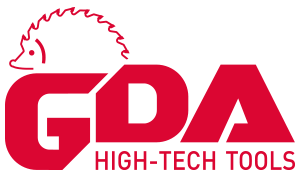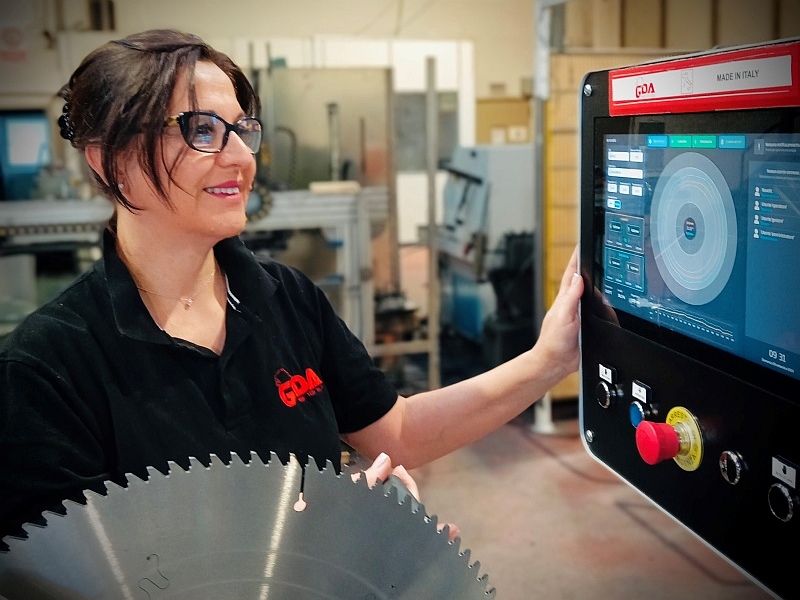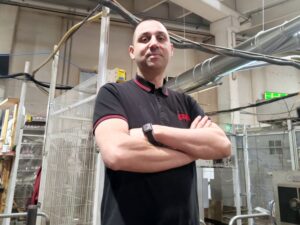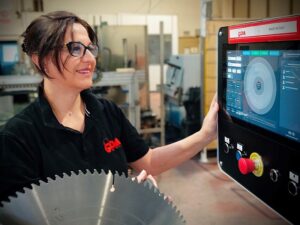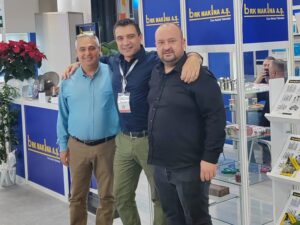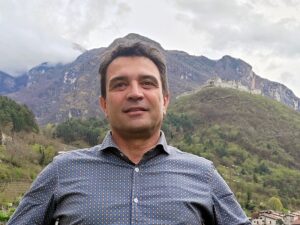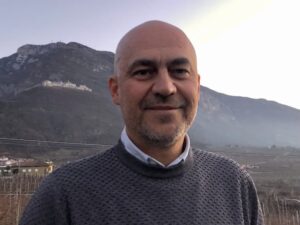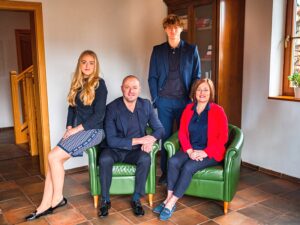In this interview, Donatella Adami reflects on her experience at GDA, from the beginnings alongside her parents to today’s challenges. Between quality control, efficient logistics and the enhancement of human resources, a portrait emerges of a family business driven by passion, commitment and innovation.
You play a key role at GDA, dealing with strategic areas such as Quality Control, Logistics and Human Resources. Tell us about your career path within the company and how these responsibilities have evolved over time.
My career at GDA started as a young girl together with my brother, tidying up the notches on trays that my mother would then braise by hand. From there, the company has grown from the basement to a more and more articulated and broader reality, with rapid and profound changes.
I grew up jumping from the ink of the offices to the oil of the increasingly numerous and automated machines. A ‘normal’ story of family capitalism, after all.
Equally ‘normal’ was for me growing up in a typically male environment. I say this not in order to emphasise gender issues, which should leave time for them when it comes to business, but because dealing with employees who are overwhelmingly men has been and remains a strategic area, albeit with a much slower evolution compared to other areas.
So let’s talk about human resources
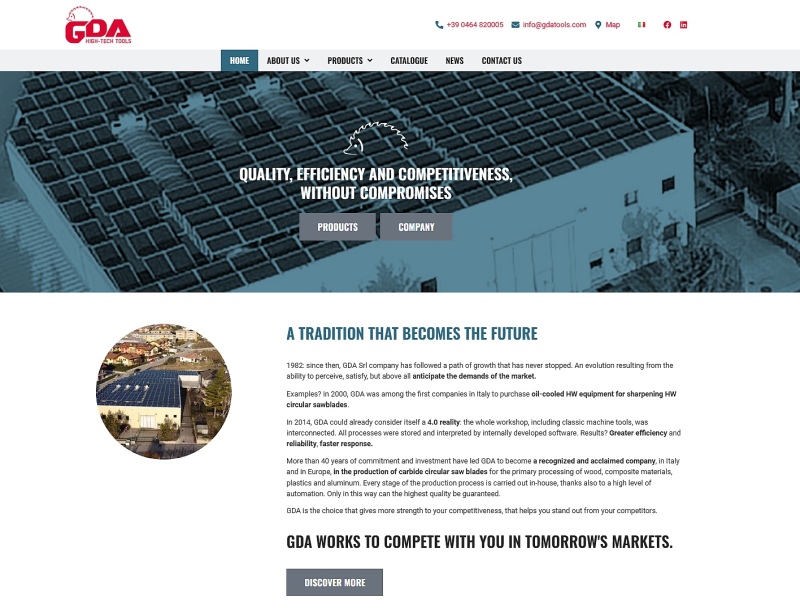
First of all, I would like to emphasise that everyone who works with us plays a key role. I see the company as a hand-wound clock, where even the smallest and seemingly insignificant gears are essential for proper functioning.
The entrepreneur, or in our case the entrepreneurial family, is the one who assembles the clock and keeps it wound.
With regard to human resources, the company and the people who work in it are one and the same. Finding qualified personnel is difficult but not impossible. The real challenge is to keep employees in the company with ever new motivations, which only sometimes coincide with purely economic ones.
That is why we communicate transparently with our employees, encouraging their feedback and discussion, rewarding merit and good initiative.
I also believe strongly in the importance of a welcoming working environment in every sense, and the direction in the company is marked in this sense.
There is still a lot to be done, but the ideas and implementation methods are clear. The new production structure will give considerable impetus to this direction, which I consider truly ‘strategic’.
What about the Quality and Logistics areas?
As far as quality control is concerned, the weight and role of technology has proven increasingly relevant, substantially changing production and working methods.
Long-established manual practices relying mainly on experience, subjected to the scrutiny and judgement of the customer, often went into crisis. The need to adopt new objective and measurable procedures therefore emerged.
Quality, together with innovation, has long been the element that determines market permanence, especially in a mature sector like ours. That is why, today, in our company, we verify adherence to specifications not only of the finished product but also of each semi-finished product at the end of every processing step.
We use sophisticated, precise and customised measuring instruments, with the aim of eliminating the subjective aspect from verification. ‘The ‘eye’ that comes from experience still plays a role, but in the end what counts is objective and measurable data.
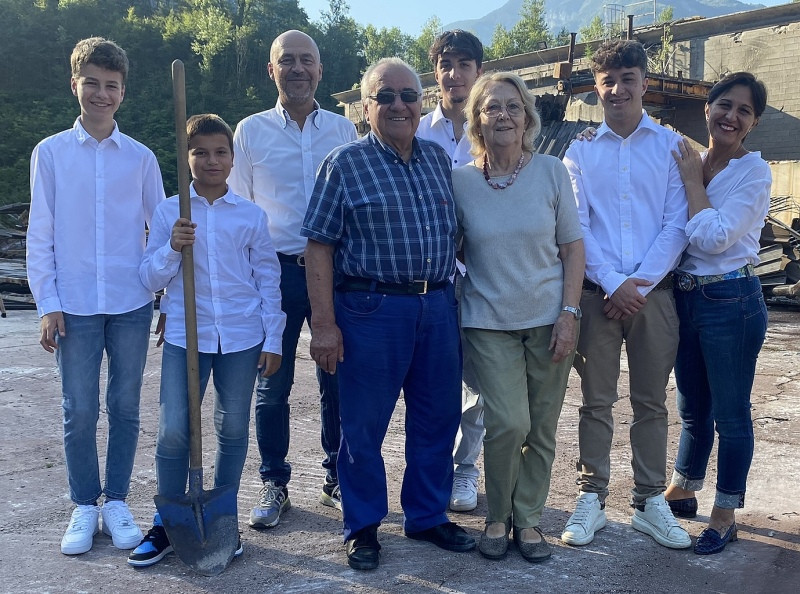
What motivates you most in your daily work?
I am very proud to carry on with my brother a project started by my parents forty years ago, and dedication has been and still remains important to me.
But perhaps the drive that really keeps me going is curiosity: every day I ask myself what I will have learnt, who I will have met, what problems I will have solved and what I will not have solved once the evening arrives.
Last but not least, being a mother as well, the desire to create opportunities for my children and to leave them what I find in ever so slightly better conditions is another powerful stimulus, honestly.
What are the most significant challenges you face in Quality Management?
One might think that everything has already been invented in the tool market and that, with production entrusted to increasingly precise machinery, everything is facilitated.
But this is not the case: customer demands are becoming ever more stringent, and waiting times ever shorter. So gradually ‘better’ products are subjected to ever ‘better’ controls.
In this seemingly endless circle, the real difference is still made by the people and the motivations that drive them.
The real challenge is to get all our employees to internalizethe culture of quality, so that yielding to compromise for whatever reason disappears.
The packaging of circular saw blades is a crucial element in guaranteeing the quality and integrity of your products. What innovations have you introduced in this area under your leadership and how have they impacted customer satisfaction?
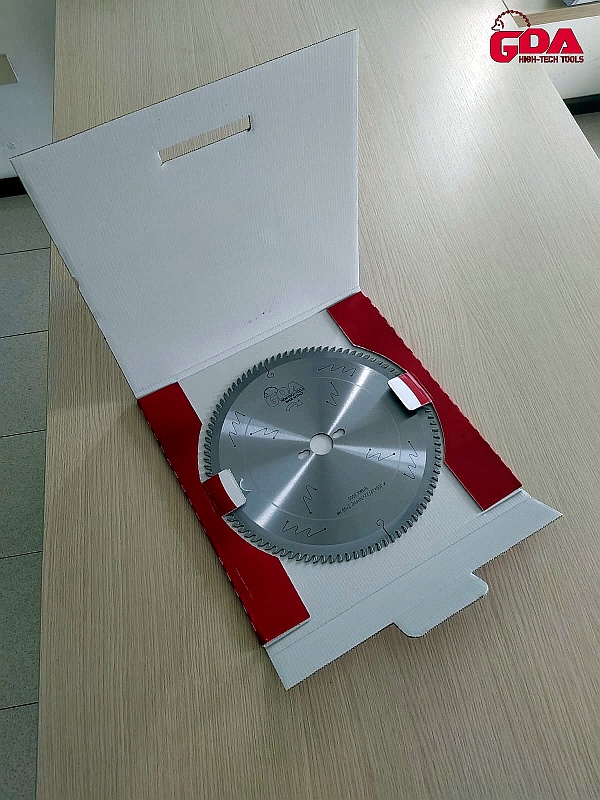
One might think, in fact, that for metal tools ‘the box’ matters much less than for food products or some fragile artefacts such as crystal glasses. In reality, packaging is also very relevant.
Solutions exist, but the real challenge is to reconcile the needs of environmental sustainability with those of product integrity.
In terms of innovations, I’ll mention just a couple to keep it brief. Over time, we have adopted packaging that meets the requirements of Legislative Decree 152/06, allowing it to be fully recyclable as paper.
For our customers, being able to offer a ‘green’ product even in ‘packaging’ certainly has its ‘appeal’.
The same attention to the environment was used in the choice of the composition of the protective veil applied during the final cleaning of the blade, immediately before its packaging: it is based on components with zero environmental impact.
Can you share other examples of innovations introduced to guarantee product quality?
I believe that perfecting one’s production processes is the best way to guarantee consistent product quality. Every company has its secrets, but I can give you a few examples, some ‘historical’, some more recent, that help you understand GDA’s approach to innovation.
About 25 years ago, we were the first in Italy to adopt oil bath sharpening, requiring structural modifications to sharpening machines. This led to closed chambers in which the grinding wheels operate, with a drastic reduction in noise, an increase in efficiency and precision, and an improvement in working conditions.
The ease of separating the carbide filings from the oil has allowed it to be re-used over time, with a positive impact on the environmental impact. We went from using a sea of water that was difficult to purify to using just one barrel of oil.
We have automated the crucial phase of the final straightening of the blades, thanks to my father’s experience, with a machine and control software that is unparalleled on the market. The alternative would be manual beating of every single blade.
We are in the process of robotising anachronistic, labour-intensive and extremely repetitive machining operations, such as the silencing of certain types of blades and the cleaning of some of their components. The benefits are obvious for both product and work quality.
Logistics is a constantly evolving area, especially in B2B where timing and reliability of deliveries are crucial. What strategies have you adopted to optimise logistics processes and what technologies are you considering for the future?
If received by 11 a.m., all requests for stock items can be dealt with on the same day. Few companies, even those much more structured than us, manage to do this.
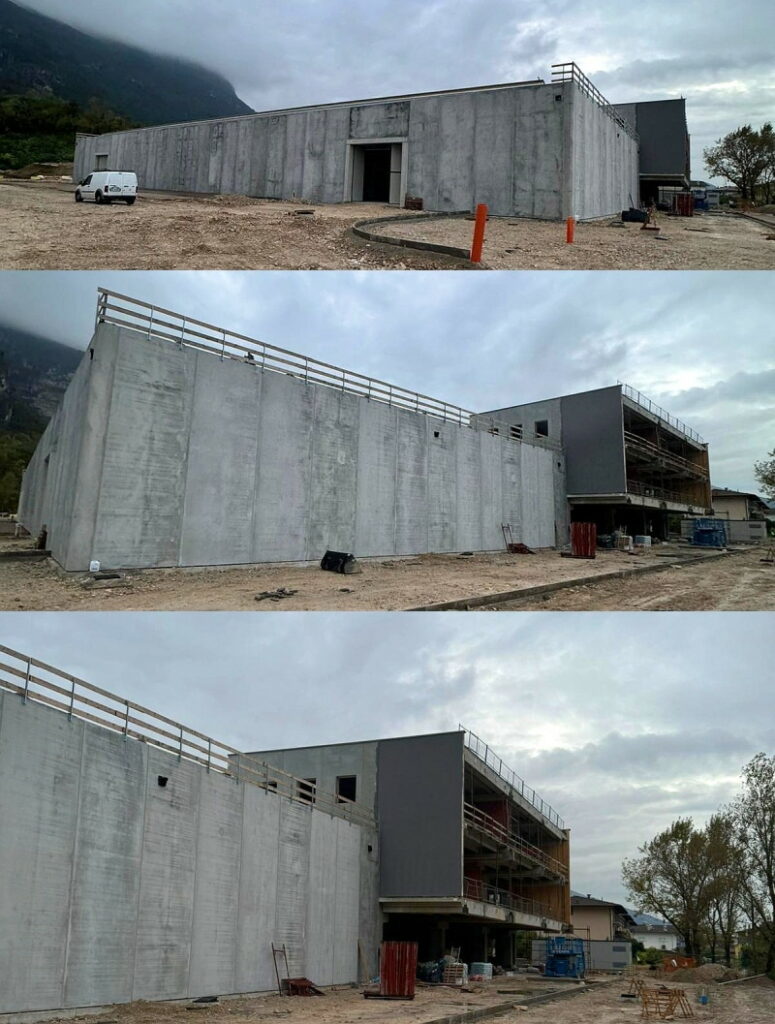
The development of proprietary software and the renewed internal reorganizationof the warehouse have enabled us to drastically reduce our ‘reaction times’ to customer requests.
For the future, we want to complete the automation of the warehouse and the movement of semi-finished products from one department to another with AGV (Automated Guided Vehicles) systems.
You emphasised earlier that people are the engine of the company. Can you tell us about any particular initiative that has had a significant impact on employees?
As I told you, the clear communication of objectives and strategies to its employees is a key aspect for GDA.
The company pursues incentive policies, both in economic terms and in terms of other benefits, which are recognised when agreed goals are reached.
This line seems to be paying off and will continue to be pursued in the near future.
Next year will mark a turning point for GDA with the move to new premises. What opportunities for growth and improvement do you see for your areas of responsibility and how are you planning this transition?
As far as human resources are concerned, the greater availability of space will allow us to look for female employees as well as male employees, an opportunity that was precluded to us until now.
Also thanks to the new space, we can integrate AGV systems into our production processes for the automatic transfer of semi-finished products from one department to another, increasing efficiency and productivity to the benefit of the working environment.
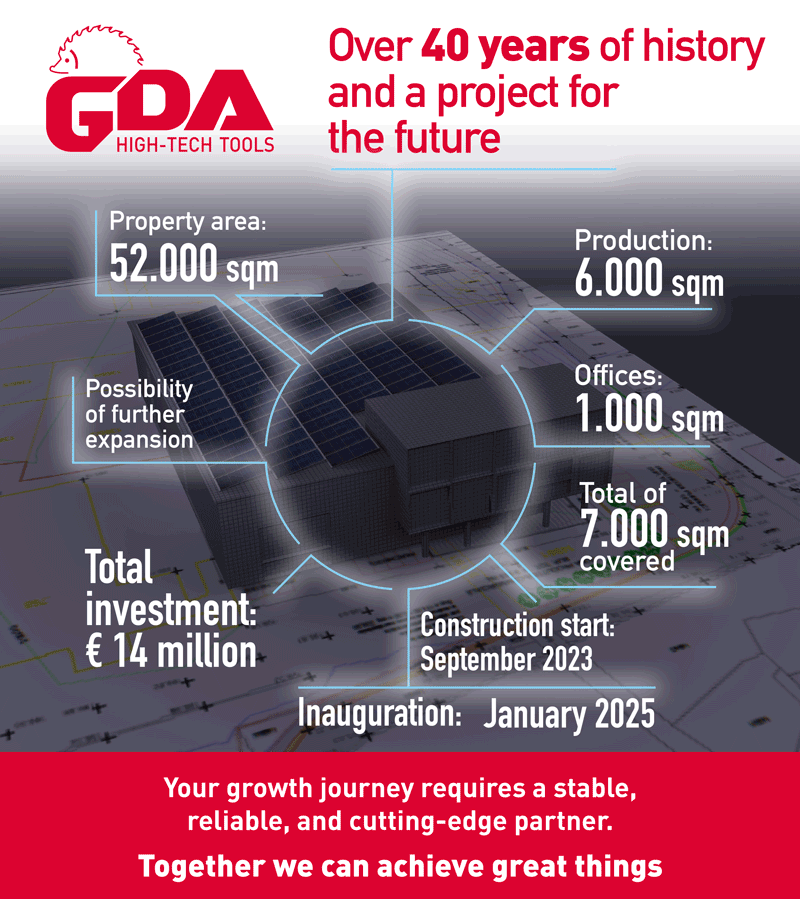
GDA is a successful family business. What does it mean to you to work alongside your brother Gianluca and how do your roles complement each other in leading the company into the future?
The division of tasks between me and my brother came naturally: he is older and more strategic, while I am more hands-on, having grown up around my father and the machines.
In conclusion, what message would you like to convey to GDA’s customers about the future of the company?
The efforts and commitment of an increasingly strong and growing team, together with the constant presence of our united family, are the most concrete and tangible signal to all our partners. For the future, these efforts and commitment will only grow.
